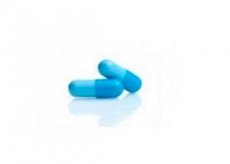Medical expert of the article
New publications
Preparations
Azinox
Last reviewed: 23.04.2024

All iLive content is medically reviewed or fact checked to ensure as much factual accuracy as possible.
We have strict sourcing guidelines and only link to reputable media sites, academic research institutions and, whenever possible, medically peer reviewed studies. Note that the numbers in parentheses ([1], [2], etc.) are clickable links to these studies.
If you feel that any of our content is inaccurate, out-of-date, or otherwise questionable, please select it and press Ctrl + Enter.

Indications of the azinox
It is used for bilharziasis (this includes also the pathologies of the urogenital system and intestine), opisthorchiasis, paragonimosis with clonorchosis, and in addition metagonism with fasciolopsidosis, and other trematodes, which are provoked by drug-sensitive helminths.
Also used for cestodes of intestinal type: dwarf tsepene, dibotriocephalus, bovine tapeworm and teniiodosis. It is also used for the treatment of neurocysticercosis.
Release form
Produced in tablets - 10 pieces inside the blister. In the package 1, 2 or 3 blister plates. Also for 12 or 20 tablets inside the jar. In a separate pack - 1 can with tablets.
 [5]
[5]
Pharmacodynamics
The medicine has a wide range of effects, which includes a lot of cestodes and trematodes. The substance prazikvantel shows powerful activity in relation to any germs that are dangerous to humans, which cause bilharziosis, clonorchosis with opisthorchiasis and paragonimosis, and also affects Hetorophyes heterophyes and Fasciolopsis buski with Metagonimus yokogawai (bowel flukes).
Resistance to the active component of the drug has hepatic fasciolae (among trematodes), but it was not possible to identify the mechanism of this resistance. Praziquantel is very active on the causative bacteria of the cestodes inside the intestine: dwarf tsepene (hymenolepiasis), broad tapeworm (diphyllobothriasis), bovine tapeworm (teniarinhoz) and pork tapeworm (shaneyoz), and in addition to cysticerci.
Praziquantel has 2 main effects with respect to substance sensitive helminths. Small doses of drugs stimulate muscular activity, which then goes into muscle contraction and central paralysis. More substantial doses of the medicine damage the tegument (outer shell of Platyhelminthes). How this effect is carried out, it has not yet been possible to reveal. There are suggestions that the properties of praziquantel are due to the fact that it can enhance membrane permeability for calcium ions (and some other 1-valent and 2-valent cations).
Pharmacokinetics
Absorption of drugs from the gastrointestinal tract - complete and rapid; The peak is reached after 1-3 hours. Plasma protein is synthesized by 80%.
It is exposed to hepatic metabolism, as a result of which inactive decay products (mono-, as well as polyhydroxylated) are formed. The half-life is 0.8-1.5 hours (praziquantel), and also 4-6 hours (the decay products of the active component).
Most of the drug is excreted through the kidneys (80% of the substance, 4 days), mainly in the form of decay products: 90% excreted over a period of 24 hours. A small part of the drug is excreted with feces. A little substance also passes into the mother's milk.
In disorders in the work of the kidneys, the excretion slows down.
In the case of problems with hepatic function, the intensity of metabolic processes decreases, as a result of which the active ingredient is retained in the body for a long period in unchanged form. As a result, the concentration of praziquantel in the body increases.
Dosing and administration
Dose sizes are assigned taking into account the type of bacterium pathogen. A single dosage is 10-50 mg / kg. Reception of tablets is carried out according to specially selected schemes.
 [6]
[6]
Use of the azinox during pregnancy
It is forbidden to take medicine during the first trimester, and also during lactation. At the 2nd and 3rd trimesters, use of Azinox is possible only if there are strict indications.
If you need to take the medicine during the lactation period, you should stop breastfeeding during treatment with praziquantel (on the day of taking the pill, and also during the next 72 hours).
Contraindications
The main contraindications:
- the presence of hypersensitivity relative to praziquantel;
- ocular or hepatic cysticercosis;
- liver failure;
- children under 4 years old.
Side effects of the azinox
Taking medication can trigger the development of the following adverse reactions:
- manifestations from the PNS and CNS: the appearance of dizziness or headaches, myalgia and a feeling of drowsiness. During the treatment of neurocysticercosis, thinking disorders, signs of meningeism, and hyperthermia can develop and the level of intracranial pressure may increase;
- reactions of the digestive tract: vomiting, abdominal pain and nausea; Occasionally there may be a transient increase in liver transaminases;
- allergic manifestations: occasionally there is a rash on the skin or a fever develops.

Storage conditions
Azinox is contained in a place that is closed from sunlight and moisture. Temperature indices are within -10 / + 25 о С.

Shelf life
Azinox is allowed to be used during the 3 years since the release of tablets.

Attention!
To simplify the perception of information, this instruction for use of the drug "Azinox" translated and presented in a special form on the basis of the official instructions for medical use of the drug. Before use read the annotation that came directly to medicines.
Description provided for informational purposes and is not a guide to self-healing. The need for this drug, the purpose of the treatment regimen, methods and dose of the drug is determined solely by the attending physician. Self-medication is dangerous for your health.

